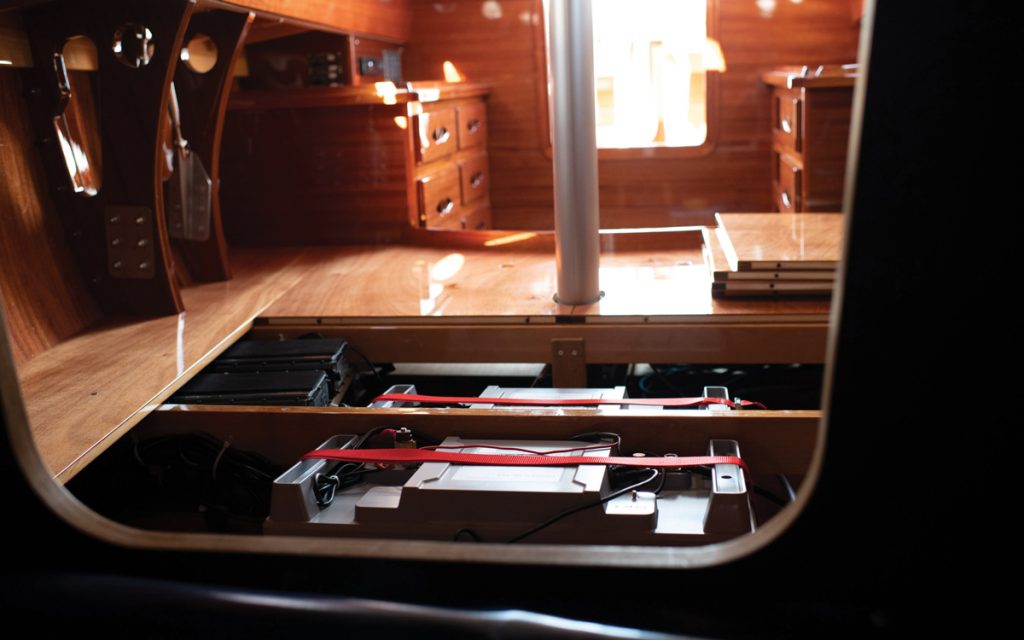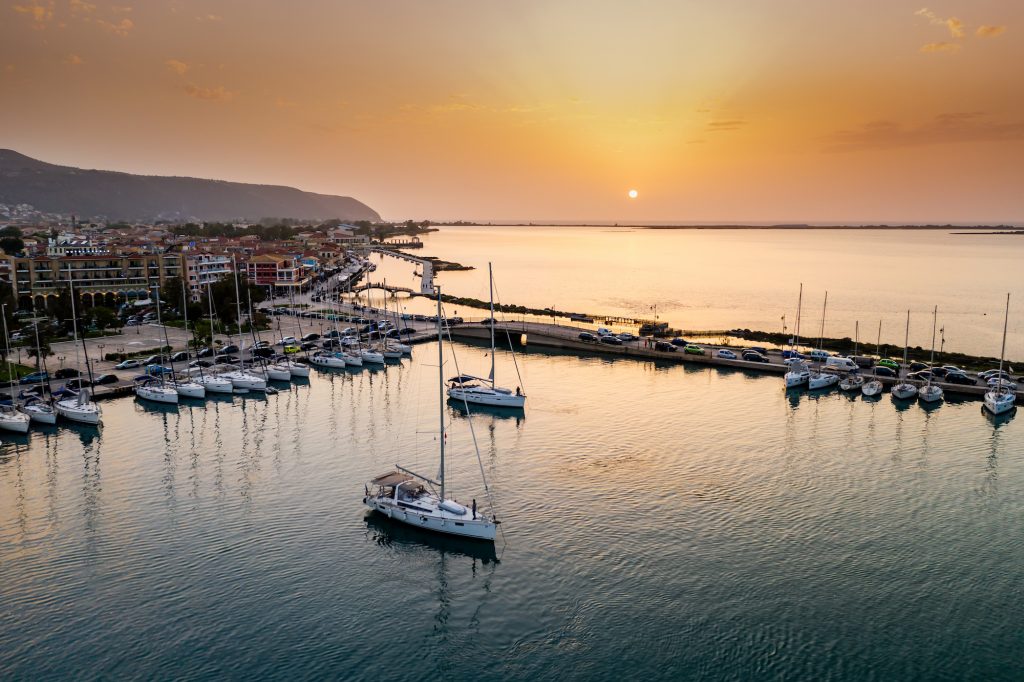Liveaboards offer the freedom of motorhome or van life, along with the beautiful scenery and exhilarating excursions of sailing – and they’re becoming more popular every day. Like other full-time travelers, liveaboarders have to deal with maintaining various home systems on the go—including their power supply. Enter lithium marine batteries. This convenient and practical technology is fast becoming a world leader in liveaboard sailing.
What defines a liveaboard
Definition of liveaboard
1: a person who lives on a boat. 2: a boat suitable for a person to live on.

What is a liveaboard and who lives on it
Just like it sounds, liveaboards are designed for people to live full-time. Think of it as an RV on the water or a mobile houseboat. Compared to more traditional sailboats, liveaboards tend to have more spacious cabins and improved or extended versions of power, water, and waste storage systems.
While there are no solid statistics on who lives on a sailboat full-time, it’s safe to say that there are thousands of people practicing this lifestyle in the US alone.
Back in 2000, there were an estimated 50,000-100,000 liveaboard residents in the United States. To be sure, these numbers have only increased since then, with huge advances in cell phones and other technologies and the growing popularity of remote work.
The liveaboard lifestyle isn’t just for singles or young couples. Families, even with young children, are increasingly wading and transitioning to liveaboard life.

What is a liveaboard dive boat
A liveaboard is a scuba diving purposely-build boat or an adapted existing vessel that offers diving trips that usually last longer than one night. The average duration is 7 nights but you can find both shorter and longer trips.
What are the power requirements of a liveaboard
Similar to motorhomes or converted vans, liveaboards tend to have two separate power systems: one using a 12V power supply and the other using a conventional 110V power supply.
When docked, you usually want to use the 110V shore connection, which not only powers your lithium batteries boat system directly but also charges the battery through the converter. This 110V power supply is like the power supply in your home.
In contrast, a 12V system draws power from your onboard battery when you are sailing or when shore power is unavailable. However, you can still power 110V equipment if your boat is equipped with an inverter that turns 12V power into 110V.

Why are lithium marine batteries great for liveaboards
Newer, more technical lithium marine batteries are increasingly becoming the popular choice for liveaboard powertrains because of their distinct advantages over conventional batteries.
Lighter weight
lithium marine batteries are much lighter in weight than more common batteries such as sealed lead acid, gel, and AGM. Traditional batteries weigh 60-80 pounds each, and lithium alternatives weigh about half that.
When you’re relying on the wind to get you where you need to go, every pound counts and upgrading to a lithium battery can significantly reduce your overall weight.
While lighter, they are no less functional. In fact, the total energy capacity of the lithium-ion marine battery will be greatly increased despite their smaller size.
Run heavy loads
Liveaboard owners usually need more power than other owners at a given time. lithium marine batteries are great for handling the extra load due to their internal chemistry.
The lower resistance of the battery itself means that the battery can draw higher current as needed, and you can get more power for heavy equipment.
Fast charging
Typically, conventional batteries take four to six hours to charge to about 80 percent capacity. Lithium-ion batteries, however, charge much faster—some can last for an hour. This is handy when charging at the dock, but can be critical if you want to take advantage of maximum light conditions from solar panels or wind power from turbines.
Easy to maintain
lithium marine batteries are basically maintenance-free. Once installed, they usually require no intervention until they need to be replaced (which may be up to a decade or more).
In contrast, submerged lead-acid batteries require regular maintenance, with careful watering every few weeks. Even sealed lead-acid batteries require regular cleaning and care to prevent corrosion.
Not only are lithium marine batteries easier to maintain, but they also last much longer than lead-acid or other types of batteries before they need to be replaced.
Enable off-grid living
Due to the benefits listed here, group 31 lithium battery can be a key element of off-grid living. They can provide heavier power usage for liveaboards and can easily work with renewable energy systems like solar or wind turbines.
Even better, their lighter weight means you can install these systems without slowing down your liveaboard boats unduly. Quite simply, there is no better technology to power off-grid living on the water.
Is lithium marine battery becoming standard on sailboats
Flooded lead-acid batteries remain the most common liveaboard sailboat batteries for a number of reasons, including their ease of use and low upfront cost. However, as lithium marine batteries become cheaper and more common, more liveaboard crews are recognizing the significant benefits they offer.
lithium marine batteries are more common in high-end and custom sailboats. They are widely regarded as the best choice for liveaboard sailing. It’s easy to see how they could become the standard for all full-time liveaboards over the next decade or so.

How expensive is it to install a lithium marine battery on a liveaboard
lithium marine batteries are notoriously expensive? This is not entirely incorrect if you only consider the price per battery.
lithium marine batteries are usually several hundred dollars more expensive than conventional batteries. Depending on the capacity, each 12V lithium battery typically costs at least $500 and often $1000 or more. Overall, the cost of purchasing and installing a lithium battery power system can range from $5,000 to $15,000, and in some cases even more.
While this may sound like a very large number, here are a few things to consider.
First, while sailboat battery may be more expensive, to begin with, they last much longer than typical lead-acid batteries. So from installing a lead-acid system to paying for a lead-acid replacement, you’ll lose most of your savings.
Second, this is still a relatively modest cost compared to the overall price of a liveaboard. Sums start in the high five figures and can easily exceed $100,000. Keep in mind slippage fees and electricity bills, which can range from hundreds to thousands of dollars per month.
If your budget allows, it can be a worthwhile upgrade to one of your sailboat’s most important systems.
Conclusion
The cost and value are up to you, but if you want to avoid the hassle, extra expense, and extra maintenance, lithium marine batteries are the way to go.
When it comes to sailing, the liveaboard lifestyle has unique power demands. It is critical to keep these in mind when designing electrical systems.
Lithium-ion batteries offer significant advantages over traditional lead-acid batteries in terms of weight, charging speed, and ability to deliver high energy loads. Also, once installed, they require no maintenance.
While they may not yet be the most common options, they are quickly becoming the industry standard. No doubt they will feature on many liveaboards in the future.
If you want to know more about the lithium marine battery review, Please click here.

